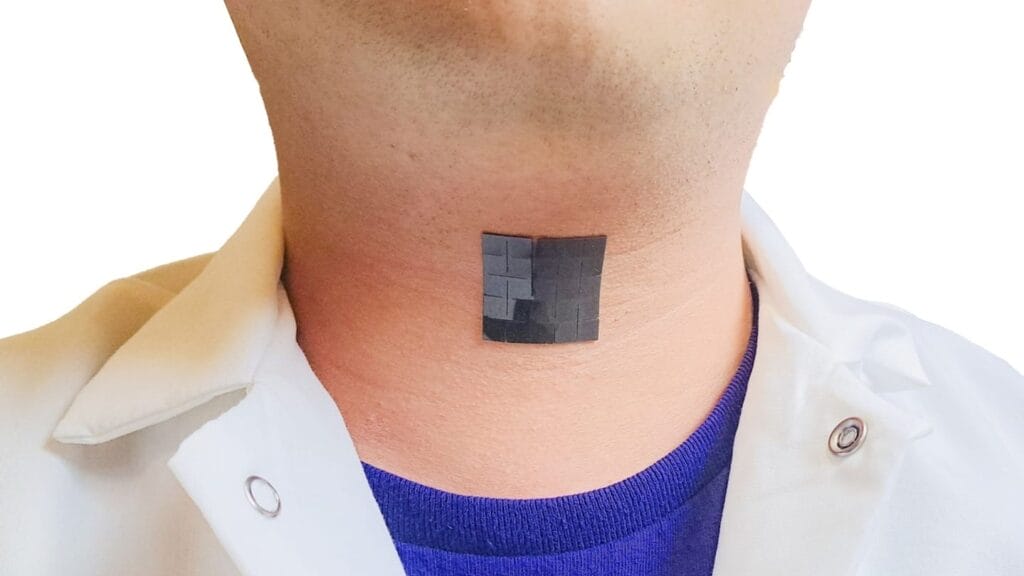

A novel innovation combines machine learning with electrical stimulation to provide a way for people with damaged vocal cords, or voice disorders, to regain their speech.
The patch, which looks like a small dark square of fabric, sticks to a user’s neck and translates throat muscle movements until signals that, with the help of artificial intelligence, are converted into the desired speech.
The device was developed by researchers at the University of California, Los Angeles, and their findings were published Monday in the journal Nature Communications.
“Existing solutions [for voice disorders], such as handheld electrolarynx devices or alternatives like the ‘talk box’ device and tracheoesophageal puncture procedures, can be inconvenient, uncomfortable, or invasive,” the study authors wrote. “Therefore, there is a pressing need to develop a wearable, noninvasive medical device capable of assisting patients in communicating during the pre- and post-treatment recovery of voice disorders.”
Impressively, the patch is both self-powered and includes an “actuation component” to generate the speech.
By pronouncing five pre-determined sentences, the researchers were able to show that the patch produced vocalizations with 95% accuracy.
Although there are roughly 12,000 new cases of laryngeal cancer in the United States each year, there is a “high prevalence of voice dysfunction” overall in assisted living and nursing home residents, prior studies have found.
Further research into the patch will investigate how to train the AI on a wider set of vocabulary, as well as explore how to manufacture such technology in a cost-effective way, the researchers said.
The body of research is growing on the ability for wearable tech to aid older adults with a variety of throat issues, from voice disorders to respiratory problems.
Another neck patch, also AI-enabled, collects data on older adults who have difficulty breathing and/or swallowing, the McKnight’s Tech Daily recently reported.


